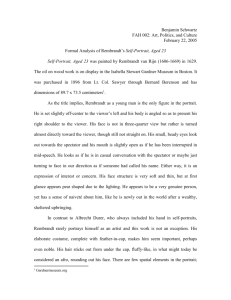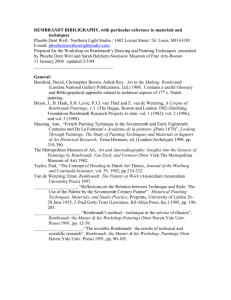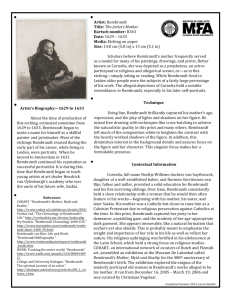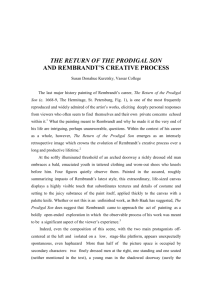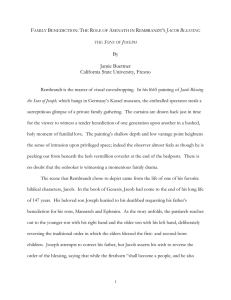Lopez_J_WSJ_01070812_Rembrandts_Night_Watch.doc
advertisement
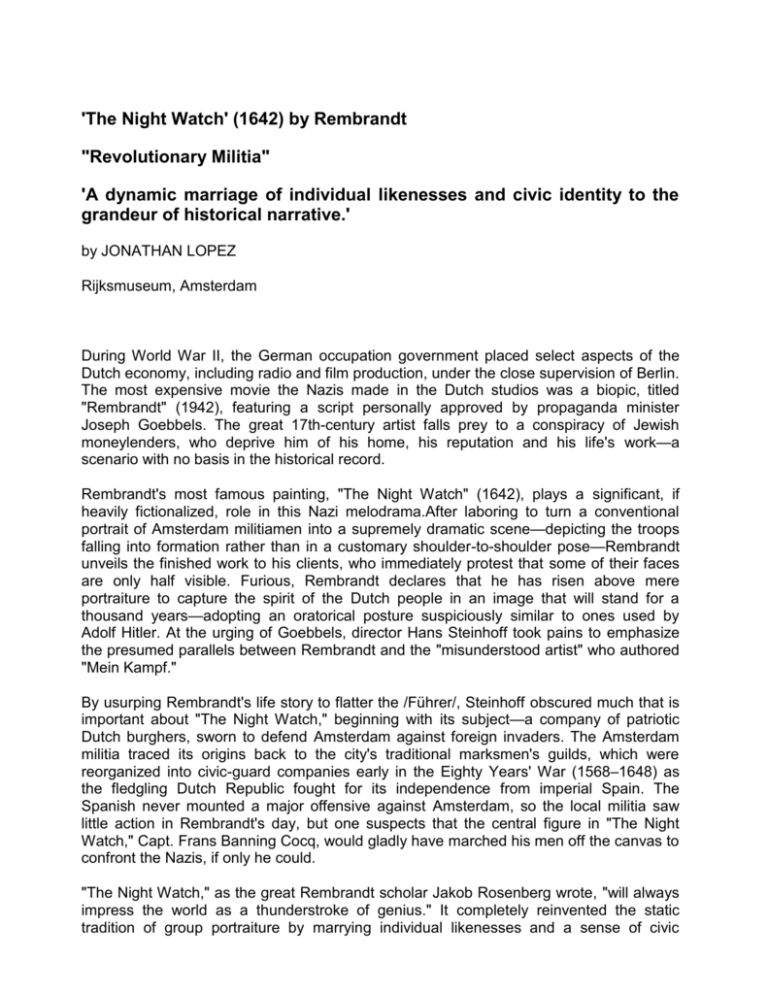
'The Night Watch' (1642) by Rembrandt "Revolutionary Militia" 'A dynamic marriage of individual likenesses and civic identity to the grandeur of historical narrative.' by JONATHAN LOPEZ Rijksmuseum, Amsterdam During World War II, the German occupation government placed select aspects of the Dutch economy, including radio and film production, under the close supervision of Berlin. The most expensive movie the Nazis made in the Dutch studios was a biopic, titled "Rembrandt" (1942), featuring a script personally approved by propaganda minister Joseph Goebbels. The great 17th-century artist falls prey to a conspiracy of Jewish moneylenders, who deprive him of his home, his reputation and his life's work—a scenario with no basis in the historical record. Rembrandt's most famous painting, "The Night Watch" (1642), plays a significant, if heavily fictionalized, role in this Nazi melodrama.After laboring to turn a conventional portrait of Amsterdam militiamen into a supremely dramatic scene—depicting the troops falling into formation rather than in a customary shoulder-to-shoulder pose—Rembrandt unveils the finished work to his clients, who immediately protest that some of their faces are only half visible. Furious, Rembrandt declares that he has risen above mere portraiture to capture the spirit of the Dutch people in an image that will stand for a thousand years—adopting an oratorical posture suspiciously similar to ones used by Adolf Hitler. At the urging of Goebbels, director Hans Steinhoff took pains to emphasize the presumed parallels between Rembrandt and the "misunderstood artist" who authored "Mein Kampf." By usurping Rembrandt's life story to flatter the /Führer/, Steinhoff obscured much that is important about "The Night Watch," beginning with its subject—a company of patriotic Dutch burghers, sworn to defend Amsterdam against foreign invaders. The Amsterdam militia traced its origins back to the city's traditional marksmen's guilds, which were reorganized into civic-guard companies early in the Eighty Years' War (1568–1648) as the fledgling Dutch Republic fought for its independence from imperial Spain. The Spanish never mounted a major offensive against Amsterdam, so the local militia saw little action in Rembrandt's day, but one suspects that the central figure in "The Night Watch," Capt. Frans Banning Cocq, would gladly have marched his men off the canvas to confront the Nazis, if only he could. "The Night Watch," as the great Rembrandt scholar Jakob Rosenberg wrote, "will always impress the world as a thunderstroke of genius." It completely reinvented the static tradition of group portraiture by marrying individual likenesses and a sense of civic identity to the grandeur of historical narrative in a dynamic composition that stands as one of the highest achievements of Baroque art and of Western painting. A former student of Rembrandt, Samuel van Hoogstraten, wrote in 1678 that "The Night Watch" made all the other civic-guard portraits at the musketeers' assembly hall in Amsterdam—the Kloveniersdoelen—look "like playing cards." But Van Hoogstraten chided his deceased master on one important point: The painting was just a bit too dark. "The Night Watch" does not portray a nighttime scene—the picture came by its nowfamiliar title during the 19th century, when a murky coat of varnish gave it a gloomy aspect. But it does exhibit the dramatic contrasts of light and shade, or chiaroscuro, that Rembrandt typically employed in defining forms. Capt. Banning Cocq and his lieutenant, Willem van Ruytenburch, boldly stride out of the shadows into the sunshine, the illusion of their forward motion enhanced not only by chiaroscuro but by the zigzag pattern of the figure group's overall footprint, a typical Baroque strategy for leading the eye into and out of the depth of the picture. Coloristic accents also help to define the space. The citron yellow of Van Ruytenburch's uniform is picked up again in the figure of the young girl who runs through a shaft of light in the middle ground. Banning Cocq's red sash rhymes with the red uniform of the guard loading his musket, at left, and the guard blowing residual powder out of his weapon's pan, at right. By the time Van Hoogstraten was writing, Rembrandt's chiaroscuro manner had lost favor, a blonder tonality and more classicizing drawing style having come into vogue. This trend began during Rembrandt's lifetime, and the master's career suffered to some extent because of it. (He also endured many self-inflicted travails—various romantic indiscretions and a bankruptcy due to profligate spending.) But there is no indication that "The Night Watch" itself had any ill effect on Rembrandt's status as an artist—a point worth noting, as a popular legend holds that the groundbreaking painting was unappreciated in its time and ruined Rembrandt. The available evidence suggests that Rembrandt earned a handsome sum from "The Night Watch." The 16 soldiers depicted in the middle ground reportedly paid an average of 100 guilders apiece, the amount varying in relation to how prominently they were featured. The officers, Banning Cocq and Van Ruytenburch, presumably paid more, putting the picture in line with the most costly of Rembrandt's career. Banning Cocq, for one, was pleased with it: He commissioned two small-scale copies for himself. These reveal that the picture's original format was slightly larger than what we see today, as the canvas was cut down at the far left and bottom when it was moved to the Amsterdam Town Hall in 1715. "The Night Watch" was then accorded a place of honor at the center of the Rijksmuseum, when that institution's current building opened in 1885. Opting for a more colorful storyline, the 1942 Rembrandt biopic ends with the artist, old and destitute, wandering through a cluttered warehouse, where "The Night Watch" has been placed in storage. Seeing his masterpiece once again, the aged Rembrandt smiles through his tears, turns to the camera and says, "I have not lived in vain!" Although "The Night Watch" was, in reality, never packed away, never forgotten, it is still quite true that Rembrandt did not live in vain. He created some of the most radiant works of art on earth, and even Nazi-era misinformation and malice could not dim their golden glow.

